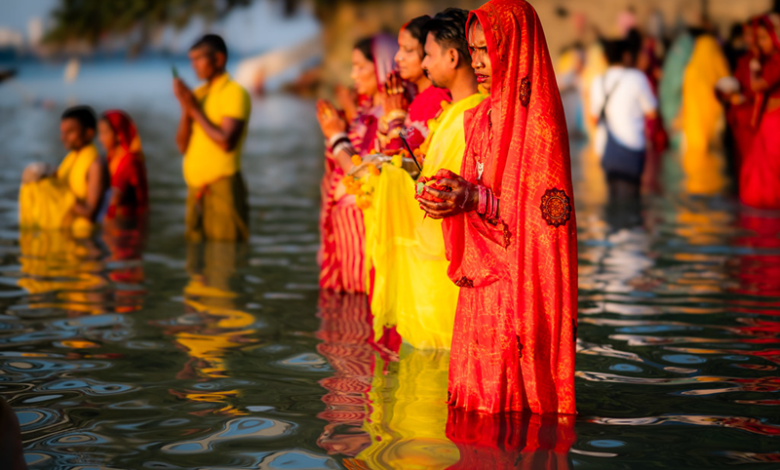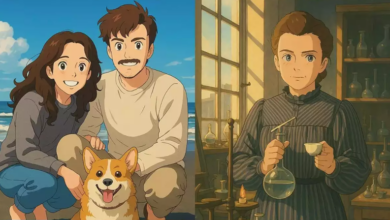Chhath Puja: The Festival’s History and the Devasena Story

News Mania Desk / Piyal Chatterjee / 10th November 2024
In Nepali, Maithili, and Bhojpuri, the word “chhath” indicates sixth. The festival is known as Chhath Puja because it is observed on the sixth day of the Hindu Luni-Solar Bikram Sambat calendar month of Kartikeya. After Navratri, this festival is the longest and most significant Hindu holiday. The word is a Prakrit derivative of the Sanskrit word “Sashthi.” The duration is four days.
According to some, Chhath Puja is the oldest holiday and may have been before the Ancient Vedas because the Rigveda includes hymns about worshiping the Sun and other customs that are comparable to those observed during this festival. These rites are also mentioned in the Mahabharata, where Draupadi is shown carrying out comparable rites. The Pandavas and Draupadi performed the Chhath rites on the wise counsel of Dhaumya. Worshiping the Sun helped the Pandavas retake their realm and resolved many of Draupadi’s issues.
This festival’s scientific or yogic origins can be traced back to the Vedic era, when intellectuals and rishis employed this method to abstain from meals by drawing vitality from the sun’s rays. The Chhath Method was the name given to this. When Lord Rama and Sita were crowned after returning from exile, some ancient sources also claim that they fasted and performed puja to the sun during the Kartika month during Shukla Paksha.
Today, the two countries that celebrate Chhath the most are India and Nepal. This event is typically celebrated with great fervor in the Madhesh area of Nepal and the Indian states of Bihar, Jharkhand, and Uttar Pradesh. In appreciation of life on Earth, this celebration is devoted to the Sun and his younger bride, Usha. Thus, there is absolutely no idolatry! Chhath is also celebrated by some Muslims. Since there is no idol worship, no plastic, color, metal, or other materials are used to build idols, which causes pollution when those idols are subsequently submerged in surrounding bodies of water. For this reason, environmentalists consider this festival to be the most environmentally benign Hindu celebration.
Over the course of four days, the festival’s laborious rites are performed. Holy bathing, fasting and refraining from drinking Vratta water, standing in water for extended periods of time, and presenting Prasad (prayer offerings) and Arghya to the rising and setting sun are among the customs. As they make their way to the banks of the river, other followers also march in prostration.
Chhathi Maiya is the name of the Goddess who is worshipped during this Chhath Puja, together with the Sun. According to the Vedas, Chhathi Maiya, also called Usha, was the adored younger spouse of the sun god Surya. She is also revered in the Mithilanchal region as “RANA MAI.”
Kumar continues by narrating the origins of the association of Devasena with children. Probably in the region that is now Bihar and Jharkhand, there once lived a king named Priyavrat and his queen, Malini. A bowl of kheer (rice pudding) emerged from inside the havan kund (fire pit) during their Putrakaamesthi Yagya, a rite in which they asked the gods to grant them a son, because they were childless. After eating the pudding, the queen gets pregnant. The infant is stillborn, though. She goes to a river to end her life since she is so distraught, but a woman stops her. She identifies herself as Devasena/Shasthi and requests that the queen worship her and the sun deity in order to grant her offspring and ensure their safety. The Queen Malini did as asked, and was soon blessed with a child. Since then, the practice of Chhath Puja started.
In addition to the religious significance of giving thanks to the Sun for giving us a wonderful life, the festivals’ customs also have some scientific value. There is a reason why the rituals require standing by the river for extended periods of time or praying there. Sunlight is most helpful around sunrise and dusk because these are the times when the sun’s UV radiation are at their lowest. By eliminating any harmful energies, these sun beams subsequently aid in the detoxification of the body, mind, and soul.
This festival, which marks the rising and setting of the Sun, is the only one in Hinduism, and maybe the only one worldwide. The most distinctive aspect of this Chhath Puja is that, in contrast to the majority of Hindu holidays, there is neither idol worship nor Murti Pujan. Regardless of caste, creed, gender, ethnicity, or social stigmas, some people merely believe that the sun is essential to the existence of perhaps every species on the planet, and this festival is a means to honor it.
In addition to the well-known mythology surrounding Chhath Puja, the celebration has a link to farming. Since the worship of the sun is a gesture of thanks for the abundant harvest of the just concluded season—rice is one of the crops grown during this time—it can be categorized as a post-harvest festival.






